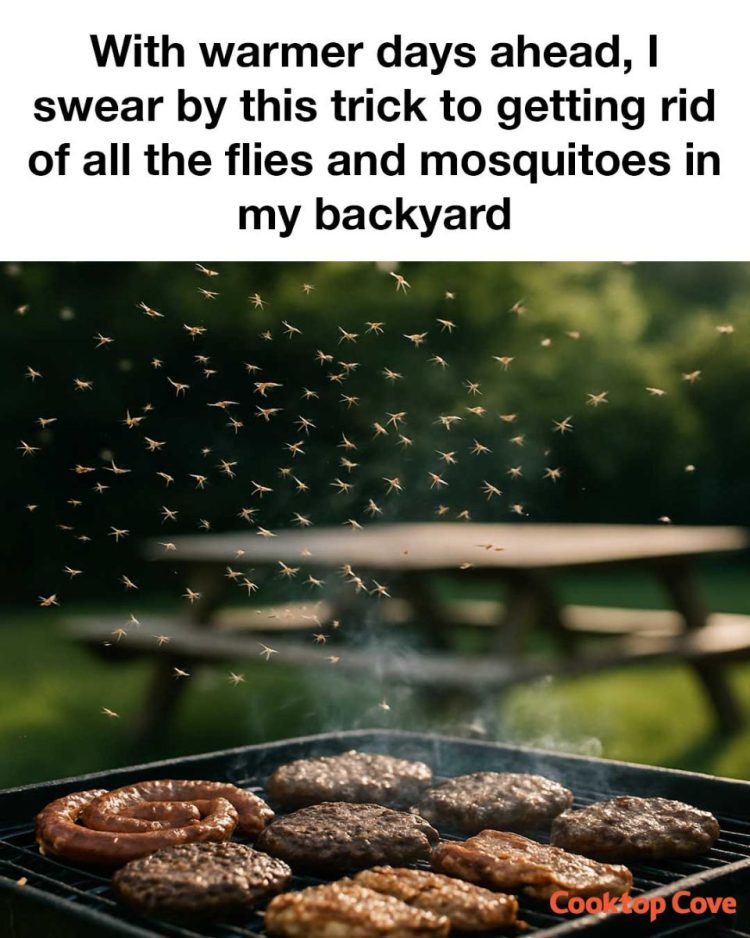As the days grow longer and the temperatures rise, many of us look forward to spending more time outdoors, enjoying the sunshine and fresh air. However, with the warmer weather comes an unwelcome side effect: the invasion of flies and mosquitoes. These pesky insects can quickly turn a pleasant afternoon in the backyard into a frustrating battle.
While commercial insect repellents are readily available, they often contain harsh chemicals that many people prefer to avoid. Fortunately, there are natural and effective ways to keep these insects at bay, allowing you to enjoy your outdoor space without the constant buzzing and biting. In this article, I’ll share the trick I swear by to rid my backyard of flies and mosquitoes, along with other tips and insights to help you create a bug-free zone.
1. Understanding the Problem: Why Flies and Mosquitoes Thrive in Warm Weather
Flies and mosquitoes are cold-blooded creatures, meaning their body temperature is regulated by the environment. As temperatures rise, their metabolic rates increase, leading to more activity and faster reproduction. Mosquitoes, in particular, thrive in temperatures between 80°F and 90°F (27°C to 32°C), which is why they are more prevalent during the summer months.
Additionally, warm weather often brings about increased humidity, creating ideal breeding conditions for mosquitoes. Stagnant water from rain or irrigation systems provides perfect breeding grounds for mosquito larvae, while flies are attracted to the abundance of food sources that become available during outdoor gatherings.
2. The Health Risks Posed by Flies and Mosquitoes
Flies and mosquitoes are not just nuisances; they pose significant health risks. Mosquitoes are known carriers of diseases such as West Nile virus, Zika virus, dengue fever, and malaria. Even in areas where these diseases are not prevalent, mosquito bites can cause itchy welts and allergic reactions.
Flies, on the other hand, are notorious for spreading bacteria and pathogens. Houseflies can carry over 100 different pathogens, including E. coli and Salmonella, which they transmit by landing on food and surfaces. This makes it crucial to control their presence, especially in areas where food is prepared and consumed.
3. The Science Behind Repelling Insects
Insects are repelled by certain scents and substances that interfere with their ability to detect humans and animals. Mosquitoes, for example, are attracted to carbon dioxide and body odors, but certain compounds can mask these signals. DEET, a common ingredient in commercial repellents, works by confusing mosquitoes’ olfactory receptors, making it difficult for them to locate their targets.
Natural repellents often use essential oils like citronella, eucalyptus, and lavender, which contain compounds that are unpleasant to insects. These oils can be applied to the skin or used in diffusers to create a protective barrier against mosquitoes and flies.
4. Popular Viral Hacks for Keeping Bugs at Bay
The internet is full of viral hacks and DIY solutions for repelling insects. Some popular methods include using dryer sheets, which are said to repel mosquitoes due to their fragrance, and placing bowls of vinegar around outdoor areas to deter flies.
Another trending hack involves using a fan to create a breeze, which can make it difficult for mosquitoes to fly and reach their targets. While these methods can be effective to some extent, their success often varies based on environmental conditions and the severity of the insect problem.
5. The Trick I Swear By: A Step-by-Step Guide
The trick I swear by involves creating a homemade insect repellent using natural ingredients. Here’s how you can make it:
1. Gather your ingredients: You’ll need 1 cup of witch hazel, 1 cup of water, and 20-30 drops of essential oils such as citronella, eucalyptus, and lavender.
2. Mix the ingredients: In a spray bottle, combine the witch hazel and water. Add the essential oils and shake well to mix.
3. Apply the repellent: Spray the mixture around your backyard, focusing on areas where mosquitoes and flies are most active. You can also apply it to your skin, but be sure to test for any allergic reactions first.
see continuation on next page
